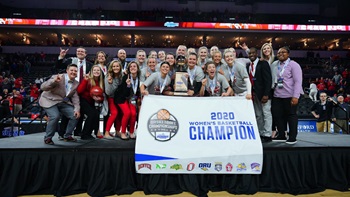USD professor receives Fulbright Scholar grant to teach at Catholic University of Chile
Swanson, whose research interests are mostly based in the areas of ecological physiology as well as the evolution of physiological adaptation in animals (particularly vertebrates) and ornithology, will spend the 2009 spring semester in Santiago conducting research to investigate how physiological capacities of birds might limit their geographic ranges. He says the unique bird assemblages present in South America will provide an ideal setting for such studies.
"I will be investigating how metabolic rates are related to biogeography in the songbirds, which are known as the passerine birds in ornithological circles," he explained.
According to Swanson, passerine birds are classified into two groups, the evolutionary primitive suboscines and the advanced oscines. Suboscines are generally outcompeted by oscines when the two groups come into contact.
"Biogeographic analyses of passerine birds demonstrate that oscines are dominant in all continents – except South Africa, where suboscines are dominant," added Swanson, who is one of about 800 U.S. faculty and professionals who will travel abroad through the Fulbright Scholar Program. "The likely reason that suboscine dominance persists in South America is that the opportunity for interaction between oscines and suboscines has been limited until geologically recently because of the long isolation of South America from other continents where oscines have diversified."
In addition to research at the Catholic University of Chile, Swanson will participate in two different types of courses on the Santiago campus. He will be involved in a team-taught international undergraduate course in ecological physiology and he will teach a graduate seminar in Avian Metabolic Evolution. Francisco Bozinovic, Ph.D., one of the world’s foremost experts in the field of metabolic adaptation and evolution in mammals and birds, will serve as Swanson’s host.
The Fulbright Program, America’s flagship international educational exchange program, is sponsored by the United States Department of State, Bureau of Educational and Cultural Affairs. Since its inception, the Fulbright Program has exchanged approximately 273,500 people – 102,900 Americans who have studied, taught or researched abroad and 170,600 students, scholars and teachers from other countries who have engaged in similar activities in the United States. The program operates in more than 150 countries worldwide.
A photograph of Swanson is available for download at www.usd.edu/urelations/images/D_Swanson.jpg.


